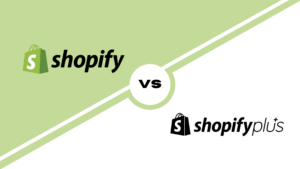In today’s competitive online marketplace, eCommerce businesses must constantly innovate and adapt to stay ahead of the curve.
One game-changing aspect that’s often flying under the radar is the immense potential of long-tail keywords. Long tail keywords, the hidden gems of eCommerce search visibility, provide a golden opportunity to outshine the intense competition in search results.
These highly specific, multi-word search queries drive targeted traffic, skyrocket search visibility, and ultimately, rake in more sales for our online store. By zeroing in on long-tail keywords, we can tap into those niche markets and consumer segments that are just waiting to be converted into loyal, paying customers.
Let’s dive deeper into the world of long-tail keywords and discover how to harness their power to boost your eCommerce sales.
Long Tail Keywords vs. Short-Tail Keywords
Long-tail keywords are search queries that typically consist of three or more words and are highly specific to a user’s intent. These keywords focus on niche topics or products, and while they may have lower search volumes compared to more generic terms, they attract highly targeted traffic.

For example, “shoes” is a short-tail keyword, while “vegan leather running shoes” is a long-tail keyword. The latter is more descriptive and gives a clearer indication of the user’s intent, making it easier to target relevant customers.
Short-tail keywords are broad, general terms that usually consist of one or two words. They have high search volumes but also face strong competition, making it difficult for smaller businesses or new websites to rank high in search results.
On the other hand, long-tail keywords are more specific and focus on a particular niche or target audience. Although they have lower search volumes, long-tail keywords generally face less competition, making it easier to achieve higher search rankings.
Additionally, since long tail keywords are more targeted, they are more likely to drive traffic that converts, resulting in a better return on investment for your eCommerce business.
Advantages of Long Tail Keywords for eCommerce
Exploiting lower competition for higher ranking potential
One of the primary benefits of using long-tail keywords in your eCommerce strategy is the ability to capitalize on lower competition.
Since long-tail keywords are more specific and niche-oriented, fewer businesses are competing for the same terms, making it easier for your online store to rank higher in search engine results pages (SERPs).
High rankings translate to increased visibility, which in turn leads to more organic traffic and potential customers for your eCommerce business.
Achieving higher conversion rates through targeted traffic
Long tail keywords are valuable for driving targeted traffic to your website. By focusing on highly specific search queries, you can attract potential customers who are already interested in the products or services you offer.
This targeted traffic is more likely to convert into sales since these users are further along in their buyer’s journey and have a clearer intent to purchase.
In essence, long tail keywords help you connect with an audience that is primed and ready to buy, resulting in higher conversion rates and increased revenue.
Enhancing customer targeting and personalization opportunities
Long tail keywords also offer valuable insights into your customers’ preferences and needs. By analyzing the search queries that bring users to your website, you can better understand what they are looking for and tailor your offerings accordingly.
This enables you to create more personalized shopping experiences, which can lead to increased customer satisfaction and loyalty.
Additionally, the use of long tail keywords allows you to target specific segments of your audience more effectively. You can develop content and marketing campaigns tailored to these niche groups, addressing their unique pain points and offering solutions that cater to their specific needs.
By honing in on these targeted customer segments, you can foster stronger relationships with your audience and improve the overall effectiveness of your marketing efforts.
Identifying the Right Long-Tail Keywords for Your eCommerce Business
Conducting Keyword Research
Effective keyword research is the foundation for discovering the right long tail keywords for your eCommerce business. Begin by brainstorming topics related to your products or services, and consider the search intent of your target audience.

Dive deep into your industry, explore customer pain points, and examine search trends to identify potential long-tail keywords that resonate with your audience. Remember to prioritize keywords with a balance of search volume and competition, ensuring that your chosen keywords have the potential to drive targeted traffic to your site.
Analyzing Competitors’ Keywords
Investigate the keyword strategies of your competitors to gain valuable insights into their approach. Review their content, meta tags, and product descriptions to uncover long-tail keywords they’re targeting. Pay attention to their successes and shortcomings, and use this information to refine your own strategy. Look for gaps in their keyword choices and seize the opportunity to differentiate your eCommerce store by targeting unique long tail keywords. Additionally, monitor your competitors’ search rankings and performance to stay informed about emerging trends and opportunities in your market.
Utilizing Keyword Research Tools
Keyword research tools can be a game-changer for your eCommerce venture, helping you discover high-potential long-tail keywords and analyze their search volume and competition levels. Tools such as SurferSEO, SEMrush, and Ahrefs provide valuable data to guide your keyword selection.

Use these tools to identify long-tail keywords that align with your goals and have the potential to drive targeted traffic to your online store. Continuously refine your keyword strategy based on the insights these tools provide, and stay ahead of the competition by adjusting your approach as new trends emerge.
Delving Deep into Your Industry
To identify the perfect long tail keywords, immerse yourself in your industry. Stay informed about the latest trends, news, and developments in your niche. This knowledge will help you better understand your customers’ needs and preferences, allowing you to target long-tail keywords that address their specific pain points and desires.
Understanding Your Customers’ Needs
A thorough understanding of your customers’ needs is crucial for selecting long-tail keywords that resonate with your target audience. Conduct surveys, collect feedback, and monitor customer behavior on your website to gain insights into their preferences, challenges, and motivations. Use this information to tailor your keyword strategy to address their needs, ultimately increasing your chances of driving conversions and sales.
Studying Search Trends
Keeping an eye on search trends is an essential part of effective keyword research. Platforms like Google Trends and industry-specific blogs can help you stay up-to-date with emerging search patterns and popular topics within your niche. By staying informed about search trends, you can identify high-potential long-tail keywords that align with your audience’s interests and drive targeted traffic to your eCommerce site.
Brainstorming Long-Tail Keywords
Begin by listing topics related to your products or services. Then, brainstorm potential long-tail keywords around those topics. Consider the search intent of your audience, and think about the types of queries they might use when looking for your products or services. Focus on long-tail keywords that address specific needs, preferences, or questions your customers might have.
Evaluating Keyword Potential and Value
As you brainstorm long-tail keywords, keep in mind the potential value each keyword can bring to your business.
Assess the search volume and competition levels for each keyword using keyword research tools like Google Keyword Planner, SEMrush, or Ahrefs.
Prioritize long-tail keywords that strike a balance between search volume and competition, ensuring that they have the potential to drive targeted traffic to your site while also being achievable in terms of ranking.
Continuously refine your keyword strategy based on the insights you gather and the evolving needs of your target audience.
Incorporating Long-Tail Keywords into Your eCommerce Platform
Unveiling and selecting the right long-tail keywords marks a significant milestone for your eCommerce venture. However, the true game-changer lies in how effectively we incorporate these keywords into your eCommerce platform.
When executed with precision, this crucial step has the potential to supercharge your search engine rankings, attract a highly targeted audience to your online store, and enhance the overall user experience.
In the upcoming section, we will delve into the practical steps of optimizing your product titles and descriptions, creating engaging blog content, and enhancing website navigation using long-tail keywords. Unlock the true potential of long-tail keywords for your eCommerce business with these tips:
Optimizing Product Titles and Descriptions with Relevant Keywords
Your product titles and descriptions are prime real estate for long-tail keywords. They directly impact your search engine rankings and influence shoppers’ purchase decisions. To optimize these elements, incorporate relevant long-tail keywords naturally and meaningfully.
Ensure that your product descriptions are informative and enticing, clearly highlighting the benefits and features of your products using keywords your target audience is likely to search for.
Developing Informative and Captivating Blog Content
Blogs are a fantastic avenue for integrating long-tail keywords while providing value to your audience. Craft articles around topics that align with your chosen long-tail keywords. Make sure the content is valuable, informative, and engaging, enhancing your brand’s authority while improving your site’s SEO. Remember to use long-tail keywords naturally within the content, and avoid keyword stuffing, which can negatively affect your SEO performance.
Improving Website Navigation and User Experience with Strategic Keyword Placement
User experience is a significant factor in SEO and conversions. Strategic keyword placement can enhance your site’s navigation, making it easier for visitors to find what they’re looking for. Incorporate long-tail keywords into your site’s meta tags, image alt text, and category pages. Additionally, consider using long-tail keywords in your site’s URL structure to signal to search engines and users the content of the page. Remember, a positive user experience can lead to higher engagement, lower bounce rates, and ultimately, more conversions.
Final Thoughts
Long-tail keywords help us reach out to our audience in ways that generic keywords can’t. By focusing on what our customers are specifically searching for, we’re not just improving our SEO game, we’re also making our business more customer-centric.
This can significantly boost our search visibility, draw in shoppers who are ready to buy, and push our conversion rates through the roof.
Long-tail keywords help us reach out to our audience in ways that generic keywords can’t. By focusing on what our customers are specifically searching for, we’re not just improving our SEO game, we’re also making our business more customer-centric.
This can significantly boost our search visibility, draw in shoppers who are ready to buy, and push our conversion rates through the roof.
At Mapplinks, our team of seasoned digital marketing experts is ready to help you navigate the complexities of SEO, from keyword research and strategy to content creation and performance tracking.
We understand that each business is unique, and we’re dedicated to crafting personalized strategies that align with your goals and resonate with your audience. Contact us today and let’s turn those long-tail keywords into high-converting assets for your business.



